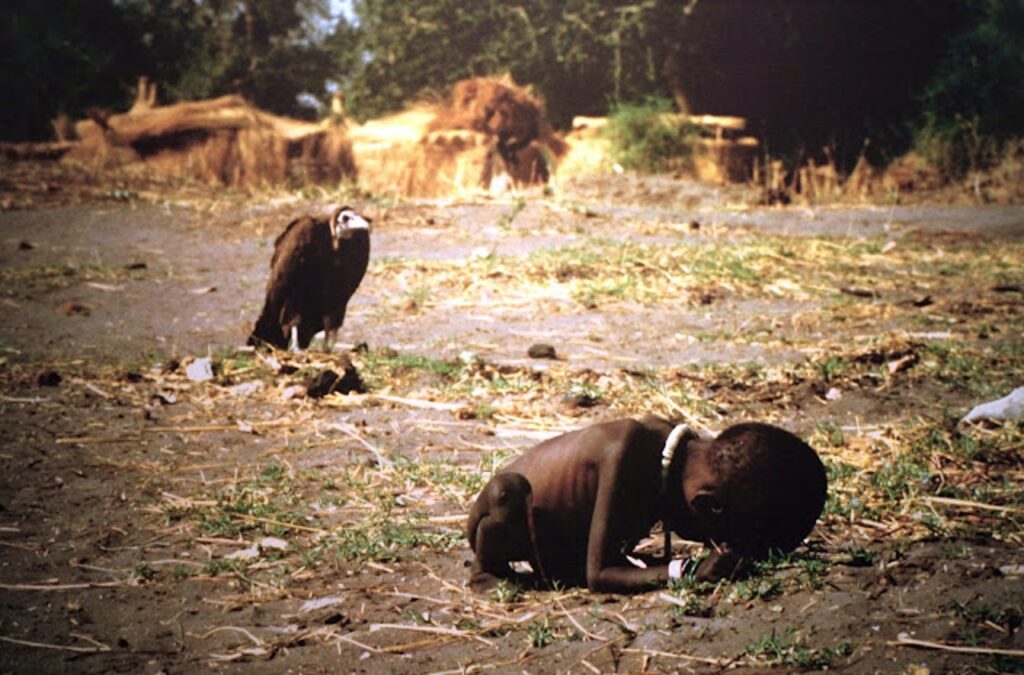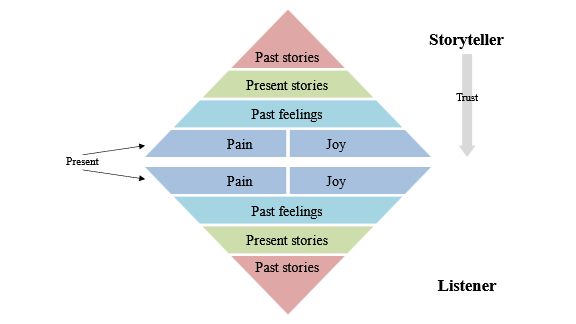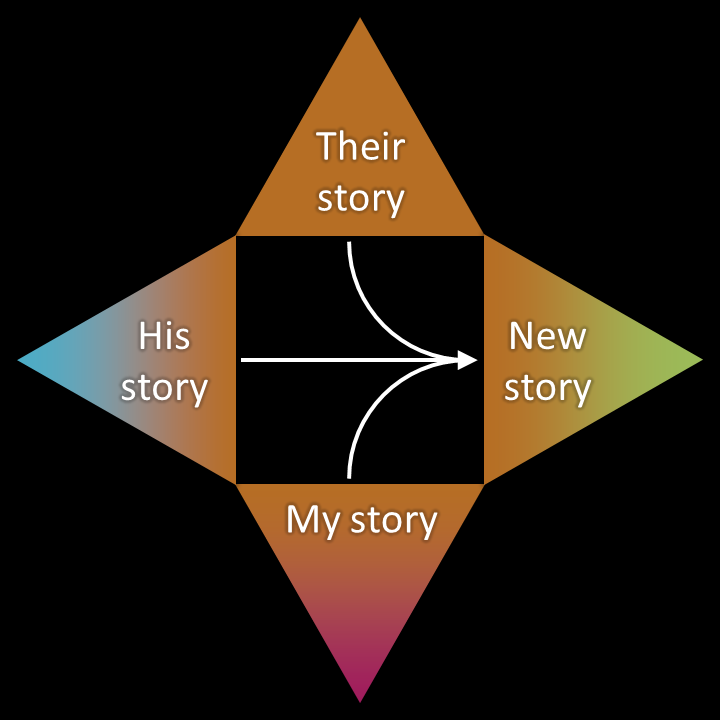Foundations of Orality
Module 1
Explore God’s design for communicating among people created in His image. How can we communicate with higher impact and scale? We will discover how orality affects every aspect of communication.

Lesson 4 – Ways of Articulating
This lesson will focus on the cluster related to ways of articulating, namely the orality traits of language, words, and narrative.
Click the arrows for more details.
This box provides general information on how our lessons are structured
The content of this site is hidden at first and meant to be revealed once the previous task is complete to guide you along the learning experience.
This is a resource for you! The lessons can be studied independently, in groups, or as part of the IOS certification program. Use it to learn or to 🚂 train others.
We encourage interaction with the material and with others whenever you encounter these emojis 😃🤔🤯.
This frame indicates a story, example, or case study.
Please leave your observations, findings, and links to additional resources in the 💬 comment section below, as they will benefit others. Enjoy!
Narrative
🔗 Check out narrative on

Storytelling in the Bible
Jesus is known to be a master storyteller.
Jesus gave all these teachings to the crowd in parables. Indeed, He spoke only in parables.
Matthew 13:34, VOICE
😃🤔🤯 Find at least five more (not including Jesus’ parables) storytelling examples in the Bible.
The Apostle Paul is usually on our minds when we think about storytelling. Really? Check this out.
🎞️
Watch Ben Witherington talk about Paul’s narrative in the Romans.
The point
In oral cultures, stories are used to make the point, not just to illustrate a point.1
Story is not the icing on the cake. Story is the cake.2
Storytelling is a universal human activity. Still, oral cultures use stories differently.
HOR: Generally speaking, stories are more random and can start at any point. People use stories to make the point and stories are often a part of a people’s identity.
LOR: Stories follow a more linear progression. They are often used to illustrate a point of as examples. Stories are used as entertainment.
😃🤔🤯 Think about stories in your culture. What was the last soty you heared/told? How are they used?
Facts are powerless
Children in Sudan are starving!
Above is a true statement. Not make people are moved my it!
Click here to experience the power of storytelling…

The Vulture and the Little Girl,3 also known as The Struggling Girl, is a photograph by Kevin Carter which first appeared in The New York Times on 26 March 1993. It is a photograph of a frail famine-stricken boy, initially believed to be a girl, who had collapsed in the foreground with a hooded vulture eyeing him from nearby. The child was reported to be attempting to reach a United Nations feeding centre about a half mile away in Ayod, Sudan (now South Sudan), in March 1993, and to have survived the incident. The picture won the Pulitzer Prize for Feature Photography award in 1994. Carter took his own life four months after winning the prize.4
Stories convince
In 2 Samuel 12, we read how the prophet Nathan confronted king David after he had killed the husband of his mistress.
😃🤔🤯 Read the story. Did Nathan illustrate the point or make the point with the story? How does Nathan’s use of story differ from stories used in sermons today?
Stories connect
Stories have the ability to circumvent logical argumentation5 and also make us feel connected to the characters.6 This happens because we relate to their feelings7 and react emotionally,8 which makes us more empathetic.9 This connection is illustrated in Savage’s story-listening pyramid as depicted below.10

Stories are not just entertainment. Our stories connect us to our listeners and vice versa.
Additionally, we can bring God’s story into the conversation. The Bible is full of stories that can emotionally connect to any thinkable circumstance.
These three stories have the potential to create a new story that connects to God’s big story.
😃🤔🤯 Think about the life-story of a contact, friend, or family member who is having physical, emotional, or spiritual problems. How can your story connect their story to God’s story?

Additional resources
🎞️ Watch this webinar with Tom Steffen about Narrative Theology and check out the corresponding 📚 narrative theology resource collection.
Language
🔗 Check out language on

Language is powerful
📔 Read Genesis 11:1-7.
There was a time when everyone on the earth spoke the very same language. As many of these people began moving from the eastern regions into the western part of Mesopotamia, they settled down on a plain in the land of Shinar. Since stone was not readily available, they discovered how to make bricks and use tar for mortar to build their structures.
People (to each other): Come on, let’s make bricks out of mud and bake them in the fire. Then we can build all we want. Let’s go build ourselves a city with a huge tower that reaches into heaven. That way we will make a name for ourselves. If we don’t, we’ll run the risk of being scattered all over the earth.
The Eternal One came down and took a look at the city and the tower the children of Adam were building. He was not pleased.
Eternal One: Will you look at that! The people are all together on this. With one language they are able to start this kind of project. This is only the beginning of what they will do. Soon they will think they can accomplish anything and everything on their own. Let’s go down and break this up! If We confuse their language, they won’t be able to understand each other’s words.
Genesis 11:1-7, VOICE
🎞️
Watch this funny video-example demonstrating language confusion.
😃🤔🤯 From the story above, what can language be used for?
Think about further functions and uses of language.
More uses of language
- Providing information
- Altering the state of persons
- Commanding and controlling
- Educating
- Aesthetic expression
- Contact to supernatural
- Verbal games
- Expressing emotions
- Thinking
- Etc.
Language, thinking & categorizing
Some examples are taken from Lothar Käser11.

When a missionary on Chuuk heard that the people said “kinissow” upon receiving a gift, he wrote it down as the translation for “thank you.” He was then surprised to hear the same word used to apologize. In western culture is no connection between “thank you” and “sorry,” but for the Chuuk, in both situations is an obligation (gift: a return, offence: restoration) on the side of the person saying “kinissow”.

In the Chuuk language breathing and a swimming jellyfish are described with the same words (A jellyfish swims to move Emén nimmaatong aa ngasangas; A person breathes Emén aramas aa ngasangas). “ngasangas” is a word to describe this rhythmic pulsing motion. Here some implications:


- The heart is “a round thing that breathes” (féwún ngasangas).
- When a native from Chuuk was asked: where does the air tube of a pig (observation during butchering) go? He said: The lungs, but still, it is the heart that breathes.
- Breathing is connected to the heart. If an asthma patient needs lung medicine, a health worker might give heart medicine.

In the Philippines, hard, heavy stones are described as living. Light, brittle stones are characterized as dead. Consequently, some features of living and dead organisms are also attributed to the stones accordingly.
“Fins” typically function as foils that provide lift or thrust or provide the ability to steer or stabilize motion in water or air. They can provide trust for fish and are used as blades for propellers and fans. Fins can also be found on air cooled engine blocks, heaters, and even cars. In many other languages however, the word for “fin” are used as fins for fish, paws for land animals, and wings for birds.




😃🤔🤯 Think of similar examples in your language.
Language provides context for understanding
HOR: Generally, language is more indirect, and informal speech is the norm in conversations.
LOR: Language used is typically very direct, and people tend to emphasize the correct use of grammar.
🎞️
Check out these 4 sentences:
- He ran into a house.
- The car ran into a house.
- The car ran out of gas.
- He ran into an old friend.
😃🤔🤯 For each sentence, what does the word 🏃🏻♂️”ran” mean? Find similar examples of context needed in your language.
Untranslatable idioms

😃🤔🤯 Write down 3 idioms from your language. How would you translate them into another language?
Idioms like “couch potato” cannot be translated literally into another language. Charles Kraft recognized this and advocated for what he termed dynamic equivalent translation.12 It means that instead of a literal translation, a equivalent with the same meaning must be found in the other language.
The Bible also used many idioms and figures of speech. Translators must wrestle with these untranslatable idioms and find ways to convey the same meaning in other languages.
Trade language does not cut it
Did you notice the idiom in the title? What does it mean?
😃🤔🤯 Read 2 Kings 18. What trick did Rabshakeh use to spread fear among the people?
The people’s language
Then the Rabshakeh stood and called out in a loud voice in the language of Judah: “Hear the word of the great king, the king of Assyria! Thus says the king: ‘Do not let Hezekiah deceive you, for he will not be able to deliver you out of my hand.’”
2 Kings 18:28-29, ESV
The Rabshakeh understood the effectiveness of using the peoples local language over the trade language used by diplomats.
Cross-cultural workers who communicate in the local language are more effective than those who use a trade language. Interviews conducted among cross-cultural workers reveal that 82% of teams using the local language have successfully established at least one local church fellowship. In contrast, only 7% of teams using the trade language have achieved the same.13
Only 7% of teams using trade language have at least one local fellowship.
7
93
82% of teams using local language have at least one local fellowship.
82
18
Additional resources
🎞️ Listen to Wayne Dye’s webinar Language: Unleashing Its Hidden Powers.
🎞️ Watch Durk Meijer talk about Orality & Scripture Engagement.
Words
🔗 Check out words on

Words have power
Have you ever seen a massive ship sailing effortlessly across the water? Despite its immense size and the fact that it is propelled by mighty winds, a small rudder directs the ship in any direction the pilot chooses. It’s just the same with our tongues! It’s a small muscle, capable of marvelous undertakings.
James 3:4-5, VOICE
🎞️
Watch Colleen Glenney Boggs explaining Speech Acts.
😃🤔🤯 Give at least 5 more speech-act examples from the Bible.
Speech-acts in the Bible
And God said, “Let there be light,” and there was light.
Genesis 1:3, ESV
📔 Read Acts 8:14-24.
😃🤔🤯 In the passage, where can you identify speech-acts in the conversation between the 2 Simons?
Fear of words
Simon the magician fears that Simon Peter’s words (a curse) will become reality!
In many LOR cultures, spoken words have the power to bless or curse. Read the following verses with this background in mind:
So it is when I [God] declare something. My word will go out and not return to Me empty, but it will do what I wanted; it will accomplish what I determined.
Isaiah 55:11, VOICE
Peter, I give you the keys to the kingdom of heaven. Whatever you bind on earth will be bound in heaven, and whatever you loose on earth will be loosed in heaven.
Matthew 16:19, VOICE
Speech-act was consequences for Bible interpretation,14 especially among oral people!
😃🤔🤯 Look into your culture and identify situations where words have power.
Context matters
HOR: People tend to be more ambiguous with words, literature is limited or does not exist in the local language, and words are powerful.
LOR: People are more inclined to use very precise words and have multiple dictionaries and thesauri in their language. Words are used as instruments.
😃🤔🤯 Move the slider back and forth. On what background does the gray cilcle appears brighter?


Context matters, especially with ambiguous words. Here an example with an ambiguous traffic sign:

Choosing words
Compare the following two verses:
Jesus then went to Caesarea Philippi.
Jesus (to His disciples): Who do people say the Son of Man is?
Matthew 16:13, VOICE
As He traveled with His disciples into the villages of Caesarea Philippi, He posed an important question to them.
Jesus: Who do the people say that I am?
Mark 8:27, VOICE
😃🤔🤯 Matthew and Mark are reporting from the same incident. There are some differences. Try to spot the most significant one and them explain it.
Words matter
The Gospel writers prioritized understandability over precision. Mark, addressing Gentiles, used “I” (Mark 8:27), while Matthew, writing for Jews, likely used the more accurate term “Son of Man” (Matthew 16:13), assuming his audience understood its significance (Dan 7:13-14).
Compare the following two verses:
John: Repent! For the kingdom of heaven is near.
Matthew 3:2, VOICE
Jesus: It’s time! The kingdom of God is near! Seek forgiveness, change your actions, and believe this good news!
Mark 1:15, VOICE
While Matthew, whose primary audience is Jews, refers to the “kingdom of heaven“, Mark and Luke always mention the “kingdom of God” when they write to a more general audience.
😃🤔🤯 What can be the reason for the discrepancy?
Audience matters
To avoid being offensive to his Jewish audience, Matthew minimized the use of “God” in his Gospel. He opted to use “kingdom of heaven” (Matthew 3:2). Conversely, Mark and Luke, addressing Gentiles, consistently used “kingdom of God” (Mark 1:15, Luke 4:43) throughout their gospels.
😃🤔🤯 For the author of the Bible, understandability seem to have a very high priority. Can we humble ourselves and sacrifice precision and the “correct” terms to be better understood by the people we serve? Give a concrete example where you will start using simple language in your ministry.
🎞️
Watch this webinar on OralityTalks as Wayne Dye speaks about Unleashing the Hidden Powers of Language.
Footnotes
- 📖 Tom A. Steffen and William Bjoraker, The Return of Oral Hermeneutics: As Good Today as It Was for the Hebrew Bible and First-Century Christianity (Wipf & Stock, 2020), 107. ↩︎
- 📖 Tom A. Steffen and William Bjoraker, The Return of Oral Hermeneutics: As Good Today as It Was for the Hebrew Bible and First-Century Christianity (Wipf & Stock, 2020), 108. ↩︎
- 🖼️ Kevin Carter – http://www.documentingreality.com/forum/f181/starving-child-vulture-photograph-9892/ ↩︎
- 🔗 https://en.wikipedia.org/wiki/The_Vulture_and_the_Little_Girl ↩︎
- 📃 Melanie C. Green and Timothy C. Brock, “The Role of Transportation in the Persuasiveness of Public Narrative,” Journal of Personality and Social Psychology 79, no. 5 (2000): 701–21. ↩︎
- 🎞️ How Stories Shape Our Minds, 2019. ↩︎
- 📖 John Savage, Listening & Caring Skills: A Guide for Groups and Leaders (Nashville: Abingdon Press, 1996). ↩︎
- 🎞️ David Phillips, “The Magical Science of Storytelling,” YouTube, March 16, 2017. ↩︎
- 🎓 Charles Madinger, “Transformative Learning through Oral Narrative in a Participatory Communication Context: An Inquiry into Radio Drama-Based Training among Zambian Caregivers of Exploited Children” (Doctoral dissertation, University of Kentucky, Lexington, KY, 2022), 84. ↩︎
- 📖 John Savage, Listening & Caring Skills: A Guide for Groups and Leaders (Nashville: Abingdon Press, 1996). ↩︎
- 📖 Lothar Käser, Foreign Cultures: An Introduction to Ethnology, trans. Sutton Geoffrey (Nürnberg, Mittelfr: VTR, 2014), chap. 12. ↩︎
- 📖 Charles H. Kraft, “Dynamic Equivalence Churches,” Missiology: An International Review 1, no. 1 (January 1973): 39–57. ↩︎
- 📖 Bod Fish and Richard Prinz, “The Effects of Language and Communication Choices,” in From Seed to Fruit: Global Trends, Fruitful Practices, and Emerging Issues Among Muslims, ed. J. Dudley Woodberry, 2nd ed., rev.enlarged (Pasadena, CA: William Carey Library, 2011). ↩︎
- 📃 Eugene Botha, “Speech Act Theory and Biblical Interpretation,” Neotestamenica 41, no. 2 (2007): 274–94. ↩︎
🎉Congratulations, you finished this lesson!
Leave additional resources and ideas for others in the 💬comment section below!

Leave a Reply